Posted by Elena del Valle on February 28, 2011
Our client, one of the world’s most recognized and respected consumer packaged goods companies, is seeking a Senior Director Global Public Affairs and Communication (GPAC). Headquartered in the Midwest, the Company operates in more than 70 countries, employing approximately 12,000 people. The GPAC organization is a group of 18 people,
Click here for the full text of Senior Director Global Public Affairs and Communication
Posted by Elena del Valle on February 28, 2011

Spanish dominant Latinos continue to buy name brand personal care products, according to a 2010 survey
Photos: Procter and Gamble
Looking for a brand loyal market segment? While many consumers are cutting back on costs and choosing less expensive products during the recession lower income Spanish dominant Latinos continue to buy name brand personal care products; more than English dominant Latinos, according to a recent Mintel survey conducted online in August 2010 among 534 U.S. Hispanic respondents aged 18 and older.
Although many of the survey respondents had a lower-than-average household income level, they indexed higher than non-Hispanics in the consumption of personal care products in 2009. According to Mintel, over the last six years, Hispanics have consistently spent more on personal care products; although the researchers expect to find a less than 1 percent drop for 2010. Hispanics who responded to the survey index higher than non-Hispanics in the purchase of haircare products and bath products.
“Spanish-dominant Hispanics are most likely to stick to their favorite brand of hand soap, body soap and shower gel, signifying that less acculturated Hispanics remain loyal to the same brand despite the economy,” said Leylha Ahuile, senior multicultural analyst at Mintel, a research company. “English-dominant Hispanics tend to have higher household incomes and apparently are less concerned with brand name soaps and more focused on saving money.

Many of the Latino survey respondents said they favor multifunctional products
In spite of Hispanics’ lower-than-average household income level, they indexed higher than non-Hispanics in the consumption of personal care products in 2009. Over the last six years, Hispanics have consistently increased their spending on personal care products. And within personal care, Hispanics index higher than non-Hispanics in the subcategories of haircare products and bath products.”
Among the those surveyed by Mintel 64 percent of Hispanics who said they have an income between $25,000 and $49,999 said they still buy name brand body soaps or shower gels compared to 58 percent of English-dominant Hispanics who said they continue to buy name brand body soaps or shower gels even during the economic downturn.
Although they could switch to more affordable products Spanish-dominant consumers who responded to the survey said they are also more likely to stick to their favorite name brand lotions (51 percent versus 35 percent of English-dominant consumers), facial cleansers (27 percent versus 20 percent of English-dominant consumers) and toothpaste or mouthwash (69 percent versus 65% percent of English-dominant consumers).
Many of the lower-income Hispanics who participated in the survey indicated they are interested in saving money with multifunctional products. For example, 65 percent of those who earn between $25,000 and $49,999 said they are interested in two-in-one shampoo/conditioner, and 83 percent said they would be more inclined to purchase toothpaste that can also serve as a mouthwash and whitener.
Posted by Elena del Valle on February 25, 2011
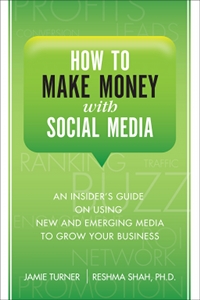
How to Make Money with Social Media book cover
Photos: FT Press
While social media are blazing across the internet there is much confusion and debate regarding their solid, measurable usefulness from a return on investment perspective. Jamie Turner, chief content officer of The 60 Second Marketer, and Reshman Shah, Ph.D., assistant professor of Marketing at Emory University, address the issue of profits in How to Make Money with Social Media An Insider’s Guide on Using New and Emerging Media to Grow Your Business (FT Press, $24.99).

Reshma Shah, Ph.D., coauthor, How to Make Money with Social Media
The authors start with the premise that the only reason to be involved in social media is to make money and they believe that it is possible for businesses to make money provided social media users follow certain steps. They assert that such steps are part of a “…well thought out, well executed, and well managed” campaign with clear strategies, objectives and tactics. The good news is that social media doesn’t have to be time consuming, according to them.
Their book, they explain at the beginning, was written to provide information for readers wanting to set up, launch and maintain a money-making social media campaign. At the end of each chapter they provide a summary section and at the end of the book there is a summary type chapter with a series of check lists. They close with three recommendations: do something even if it’s not perfect; start each day with ten social media tasks; and visit Turner’s website for ideas.

Jamie Turner, coauthor, How to Make Money with Social Media
The book, written in a somewhat informal style, also includes references to the 60 Second Marketer website. The 289-page hard cover book published this year is divided into twenty-four chapters and six parts: The Social Media Landscape, How to Set Yourself Up for Social Media Success, Social Media Platforms, Social Media Integration, How to Measure Social Media and Conclusion.
Turner is a marketer with 20 years of experience. Shah is a founder and partner at Inflexion Point Marketing Group.

Click to buy How to Make Money with Social Media
Comments:
Filed Under: Books
Posted by Elena del Valle on February 23, 2011
Putting story power to work in the Hispanic marketplace
By Bonnie Buckner and Pamela Rutledge, Ph.D.
Co-founders, A Think Lab

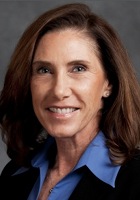
Bonnie Buckner and Pamela Rutledge, Ph.D.
Photos: Bonnie Buckner and Pamela Rutledge, Ph.D.
The explosion of new technologies and social media has created expanded opportunities for marketers and public relations professionals to reach both more pointed and more diverse audiences. There is a tendency to focus on the technology or the tools, but substance drives an effective campaign. Stories deliver substance. They provide an authentic human experience that taps into psychological fundamentals and the richness of culture, making them the most effective way to engage audiences. Stories have the ability to express the essence of a brand or advocacy campaign. They are how we make sense of the world, how we connect, and how we share.
The Hispanic marketplace is rich and diverse, consisting of many different cultures from countries in Central and South America, the Caribbean and Spain with many different levels of acculturation and assimilation. Stories are a way to bridge cultural diversity because culture is story. In a Hispanic marketplace rich with cultural histories, story is a powerful means to engage people in a meaningful way.
Click to read the entire article Transmedia Storytelling
Posted by Elena del Valle on February 21, 2011

Where did people in the United States go online the final month last year? Most of the names are familiar. Yahoo!, Google, Microsoft, Facebook, AOL, Ask Network, Amazon, Glam Media, Turner Digital and CBS Interactive were the top 10 websites visited by Americans December 2010, according to comScore, an online media measurement company.

Viacom Digital, Wikimedia Foundation Sites, Apple Inc., eBay, New York Times Digital, Demand Media, Fox Interactive Media, VEVO, Comcast Corporation, and Answers.com Sites make up the following 20 sites on the list.
Yahoo! Sites had 181.2 million visitors, followed by Google Sites with 179.3 million and Microsoft Sites with 177.0 million. Amazon Sites, with more than 91 million visitors, had its highest month of traffic on record from the holiday shopping surge, ranking number seven overall. It wasn’t all shopping online that month.

The Weather Channel and WeatherBug property both moved up the rankings in December, climbing six places and eight places, respectively. Winter blizzards and holiday travel likely prompted travelers and shoppers alike to check on the latest weather news.

Click to enlarge
According to comScore, although there is no mention of speakers of foreign languages in the United States, Google ads reached an estimated 93.3 percent of Americans online. Others with high reach on the list were Yahoo! Network Plus with an 86.6-percent reach, Yahoo! Sites with 85.5 percent and AOL Advertising with 85.0 percent. Amazon.com had a 36.0-percent reach.
Although the comScore data did not include information for demographic groups, a Pew Hispanic Center survey released earlier this month indicates Latinos may be less likely than whites to access the internet, have a home broadband connection or own a cell phone. The Pew researchers concluded that in 2010, 65 percent of Hispanic and 66 percent of black adults went online while 77 percent of white adults did so. Among those surveyed by Pew regarding broadband use at home, 45 of Latinos respondents said they have it, 65 percent of whites and 52 percent of blacks who answered the questions said they have broadband access at home.
Posted by Elena del Valle on February 18, 2011
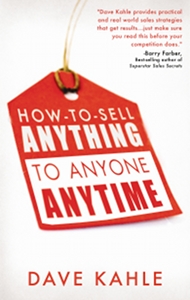
How to Sell Anything to Anyone Anytime book cover
For many years Dave Kahle made his living as a salesperson, claiming a top sales position in the country for two companies in two totally distinct industries. Now he spends his time writing books (he has authored nine books) and sharing his insights and lessons learned with would be sales people.
In How to Sell Anything to Anyone Anytime (Career Press, $14.99), a 240-page softcover book published this year he offers his ideas for simple practices and processes, step-by-step practical tips, and suggestions he believes can help readers be more successful in sales.
The book is divided into 15 chapters covering topics such as simplifying the fundamentals of the selling process, figuring out what the customer wants, making customers comfortable, how to agree on the next step, and follow up.
Kahle believes the sales process is the same regardless of the situation and that those who learn how the process works can make it work for them no matter what they are selling or to whom. He clarifies in the Introduction that the process won’t work every time but that it should work enough times to make it worth learning.
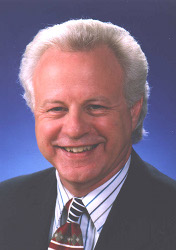
Author Dave Kahle
He says that “…selling is not magic, and there are no secrets. Instead, there are identifiable, understandable, reproducible steps in the process, which when implemented with some degree of proficiency, can be expected to lead to a positive outcome.”
After discussing many people’s ideas and misconceptions about sales he goes on to describe The Kahle Way Selling Process, a six-step process. He explains that although there are steps in the process some of the steps may take place at the same time as others and with different customers.
He emphasizes the importance of going beyond the sale and striving for a relationship. Kahle is the author of 100 multimedia training products, writes a weekly E-zine for salespeople, and has presented in 47 states and seven countries.
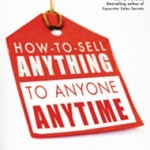
Click to buy How to Sell Anything to Anyone Anytime
Comments:
Filed Under: Books
Posted by Elena del Valle on February 16, 2011
Improving direct response ROI with value and cultural relevance
By Barry Gilbert
Vice president, marketing
PowerDirect Marketing

Barry Gilbert, vice president, PowerDirect Marketing
Photo: PowerDirect Marketing
According to U.S. Census data there were an estimated 46.9 million Hispanics in the U.S. in 2008, accounting for 15 percent of the nation’s total population and making people of Hispanic origin the nation’s largest ethnic or race minority. Not only is this segment increasing in number, with 2010 Census figures estimated to hit the 50 million mark, Hispanic audiences are also growing significantly in wealth and economic clout. Smart marketers are recognizing this explosive potential and turning to Hispanics for brand growth opportunities.
Sounds promising, but rest assured the Hispanic market is not a heterogeneous one that can easily be tapped. The Spanish language is a common thread, but audiences vary based on acculturation levels, language preference, country of origin, and more. Cultural relevance matters and it’s in the details such as messaging, language and creative.
Click here to read the entire article U.S. Hispanics open to front door marketing
Posted by Elena del Valle on February 15, 2011
Information provided by our Event Partner

The Billboard Latin Music Conference & Awards presented by State Farm
April 26-28, 2011 – Miami Beach, FL
Every year, the biggest names in Latin Music come together for the most anticipated event of the year.
The conference unites the most extraordinary people in the world of Latin music and entertainment – including the industry’s hottest artists, major record label execs, cutting-edge brand marketers, national radio programmers, world-renowned producers, revolutionary digital music execs – and many more. Join us as we celebrate and explore the issues that make this the most exciting industry in the world. Register Today & Save 15% with promo code HMPR11!
Confirmed Speakers Include:
Pitbull, Artist/Songwriter
Donato Poveda, Artist/Songwriter
Jorge Villamizar, Artist/SongwriterLuis Del Villar, President Del Records
Gerardo Ortiz, Artist: Del/Sony
Edmundo Mendieta, President, Mendieta Discos
Roberto Tapia, Artist, Musivisa/Universa
Carlos Boughton, Brand Director, Tecate and Tecate Light, Heineken USA
Carla Dodds, Director, Multicultural Marketing, Walmart
Roberto Garcia, Executive Director Hispanic Marketing, AT&T
Jesus Lopez, Chairman/CEO, Latin America/Iberian Peninsula Universal Music
Edmundo Mendieta, President, Mendieta Discos
Delia Orjuela, VP Latin Writer/Publisher Relations, BMI
Guillermo Page, SVP Commercial & Sales, Sony Music Latin
Steven Wolfe Pereira, SVP, Managing Director, MediaVest Multicultural
Andrew Sunnucks, Co-Founder, Audio Network
Rodrigo Paranhos Velloso, Head of Business Development, Google Latin America
Afo Verde, President, Latin region, Sony Music
And Many More! Full schedule available at: http://www.billboardevents.com/billboardevents/latin/schedule/index.jsp
Posted by Elena del Valle on February 14, 2011

A box of chocolates for Valentine’s Day
Photos: Conrad Miami
Valentine’s Day was declared in A.D. 496 by Pope Gelasius I. Although most of us know little or nothing about the pope the date has become popular as a day to express love and appreciation to those close to us. In the 1840s, a daughter of Massachusetts, is thought to be the first to sell mass-produced valentine cards. The tradition lives on with many people setting aside the day to celebrate love.
Thinking of selling a love related product or service? These figures may interest you. In 2008, 66.9 million opposite-sex couples lived together. In 2009, 2.1 million marriages (about 5,800 a day) took place in the United States; many of them in Nevada. That year 108,150 marriages took place in that arid state, making it the fifth nationally in marriages, even though its total population that year among states was 35th; California ranked first in marriages, according to the National Center for Health Statistics.
In 2010, first marriages took place at a median age of 28.2 and 26.1 years for men and women, respectively. Last year, 54.1 percent of adults responding to a national survey said they were married, according to Families and Living Arrangements: 2010.
At the same time the businesses that offer Valentine’s type products and services employ many people across several business sectors. For example, in 2008, there were 1,317 companies that produced chocolate and cocoa products (in 2009, Americans ate 23.4 pounds of candy per person, according to the Current Industrial Reports, Confectionery: 2009), employing 38,369 people. California led the nation in the number of chocolate and cocoa manufacturing establishments, with 146, followed by Pennsylvania, with 115; there were 422 establishments that manufactured non chocolate sweets products. They employed 16,860 people. California led the nation in this category, with 47 establishments, according to County Business Patterns: 2008.

The Spa at Conrad Miami is offering red rose promotions for Valentine’s Day
Beyond eatables there are many businesses that cater to love birds. Flower, cards and jewelry sellers figure prominently around this sweetheart centered holiday. The combined wholesale value of domestically produced cut flowers in 2009 for all flower-producing operations with $100,000 or more in sales was $359 million (domestic roses accounted for $18 million); again California took the lead, alone accounting for $269 million of the sales (Source: USDA National Agricultural Statistics Service). In 2008, there were 18,509 florists nationwide which employed 89,741 people, according to County Business Patterns.
In 2008, there were 26,683 jewelry stores in the United States. In February 2010, the stores sold $2.4 billion in merchandise, according to County Business Patterns.
Businesses of other types also promote romantic packages or simply Valentine’s Day themed products and services. For example, the Spa at Conrad Miami hotel in Florida is offering red rose promotions between $120 and $200. These include a 60-minute aromatherapy massage and 30-minute organic sweet red rose facial; a 30-minute aromatherapy massage and 60-minute organic sweet red rose facial; and a Champagne mimosa manicure and pedicure and 30-minute organic sweet red rose facial.
Still looking for love? In 2007, there were 393 dating service companies including internet dating services, employing 3,125 people and making $927 million in revenue (source: 2007 Economic Census).
Posted by Elena del Valle on February 11, 2011
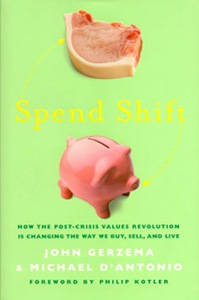
Spend Shift book cover
John Gerzema, a social theorist on consumerism at Young & Rubicam, and Michael D’Antonio, a Pulitzer prize winning author of twelve books, believe the recession is changing people’s values. They think many people are returning to self reliance and focusing on economizing while maintaining a positive attitude.
They interviewed representatives from fifty companies in dozens of communities in eight states and share some of their findings in Spend Shift How the post-crisis values revolution is changing the way we buy, sell, and live (Jossey-Bass, $25.95), a 256-page hardcover book published in 2010.
They concluded, based on their research, that 55 percent of Americans across all walks of life, income levels, political affiliations and geographic locations have embraced this shift in spending values; and that another quarter of adults share that revised focus on values. While Millenials (those born between 1980 and 1998) are at the head of the movement surprisingly almost half of seniors favor the revised spending attitudes.
The informal movement is characterized by optimism, according to the authors. Followers are learning to live with less income while seeking, and in some cases finding, greater satisfaction and happiness than in the past.
The book includes a foreword by Philip Kotler, S.C. Johnson Distinguished Professor of International Marketing, Kellogg School of Management, Northwestern University. He indicates that more than half of our country’s population is adopting the value shifts. He says “They are seeking better instead of more, virtue instead of hype and experiences over promises”; and that “People are looking for value and values.”
The book is divided into an Introduction and eight chapters titled: The New American Frontier: Detroit, Michigan; Don’t Fence Me In: Dallas, Texas; The Badge of Awesomeness: Boston, Massachusetts; An Army of Davids: Tampa, Florida; Block Party Capitalism: Brooklyn, New York; The Quality of the Lion: Las Vegas, Nevada; The Citizen Corporation: Dearborn, Michigan; Innovation Nation: San Francisco, California; and Coda: The Takeaway: Los Angeles, California.
Two thirds of the people who responded to the authors BrandAsset Valuator said they feel they can, through their purchasing habits, have an impact on corporations; supporting companies who share their values and avoiding those with opposite values.
Gerzema, who relies on data to identify social change to prepare companies wanting to adapt to and anticipate consumer demands, is the author of The Brand Bubble. D’Antonio, formerly with Newsday, is the author of Hershey, a biography, among other titles.
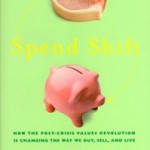
Click to buy Spend Shift
Comments:
Filed Under: Books





























